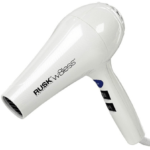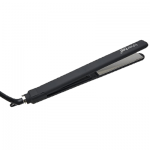Lip fillers and other forms of lip care are growing in popularity at record rates. If you don’t have lip fillers yourself, it’s safe to say that someone you know does or you may down the line. However, what isn’t talked about enough is lip filler migration. You might be asking, wait, can lip filler move? Yes, this is possible!
Don’t worry though, I’ve got all the info you could need so that you don’t turn this possibility into a reality.

Lip Filler Migration
First and foremost, let’s talk about lip filler migration and what it actually is. This is best described as anytime that your filler moves around in your lips to give you a different appearance than you originally had when you got your fillers.
This often means that your filler moves to the lower corners of your lips or underneath your lip forming nodules or clumps that can be very eye catching.
As you can imagine, this is quite a scary thing to happen, as fillers are all about placement. Moving the filler around or having them in the wrong spot at any time can give you an off putting appearance and make you less satisfied than the look you started with or completely alter your face.
However, it’s important to note that while this is possible, it is a lot less common than people make it out to be, so don’t let the concept keep you away from fillers altogether. There are some easy things you can do and watch out for to help steer you away from lip filler migration as well.
Prevention
What are those things to help steer clear? Why does filler migrate? I’m so glad you asked.
1. Do Your Research
The most important thing you can do is do your own research about where you are going, the practitioner giving you fillers, and the products that they are using. These three things are huge deciding factors in the end results.
Finding a reputable practitioner is crucial to getting the results you’re after without any chance of lip migration down the line. This means looking up reviews, word of mouth, and consulting different people beforehand to find the best option in your area. There is nothing wrong with asking the tough questions, so always ask them!
One of those questions should also be what products they use. The type of filler, the numbing cream, and the other products used during. Knowing the higher quality and lower quality options for each can help you narrow down your search and ensure you get the best results.
2. AfterCare
Aftercare is vital as well. The instructions can vary a tad, but your practitioner will personalize them for your post fillers. It is so important that you follow them to a T, otherwise there is a high chance of lip migration. Even months down the line, this is when migration tends to happen more often than not, so you aren’t out of the woods yet. I know it can be hard to follow instructions, but this is one of those times you have to follow the rules for the sake of your lips!
How to Fix Lip Filler Migration
If you’re reading this now and have already accumulated some migration, don’t worry. You can manage your migration and still achieve your goal look. Some live under the assumption that fillers go away on their own over time. While this is true in theory, it doesn’t happen evenly or on a specific timeline, so it can be frustrating for those looking to get rid of migration sooner than later.
The most common way to address the issue is to dissolve your fillers and try again. However, this is not a process that can be executed in a day. To dissolve filler properly, you have to apply hyaluronidase to the specific area which will take some precision. It will take a bit for it to dissolve, and most specialists recommend waiting at least a month or two, some even 6 months before getting fillers again.
This will give you time to heal properly, so that your new round will have better and lasting results. So patience is key when dealing with migration! As always, talk to your practitioner to decide exact turnaround times for you, as every person is different.


